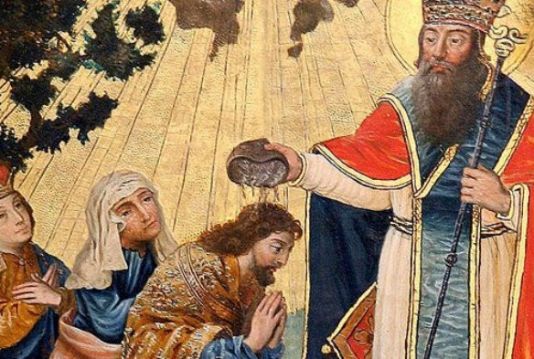
Under the leadership of Saint Gregory the Illuminator and King Tiridates III of Greater Armenia (287–330 AD), Armenia adopted Christianity as a state religion. Saint Gregory the Illuminator, the first Catholicos of all Armenians, is venerated as a saint by the Orthodox, Roman Catholic, and Anglican Churches.
St. Gregory was a relative of the ruling Arsacid (Arshakuni) kings of Armenia. King Shapur I of Persia sent his father Anak (Apak) to Armenia to assassinate King Khosrov the Great. The assassination of the Armenian king succeeded, but Anak and his family were executed. The young Gregory was saved by his nurse's family, who took him to Roman Caesarea, where he was raised as a Christian. Upon learning of his father’s treachery, Gregory resolved to serve King Trdat, son of King Khosrov.
King Trdat had also been raised in the Roman Empire, and with the help of Roman forces, he began to liberate Armenia from Sassanian control, which continued for 27 years.
After a series of victories, King Trdat offered a sacrifice in the village of Eriza, Upper Armenia, at the temple of the goddess Anahit. He then ordered Gregory to place wreaths before the idol. Gregory refused and rebuked the king for worshipping lifeless objects and created beings. He sought to proclaim the true faith and preached the salvation brought by Christ. However, his words went unheard by the king and his court.
Thirteen years later, in 287 AD, when Gregory refused to comply with the king's orders and worship the idol, King Trdat ordered that Gregory be subjected to unspeakable tortures and thrown into the pit (the Virap) in the city of Artashat, a dungeon for condemned prisoners, where Saint Gregory spent thirteen years. The life of Saint Gregory the Illuminator was recorded by the 5th-century author Agathangelos, who also compiled twenty-three of the Saint’s sermons.